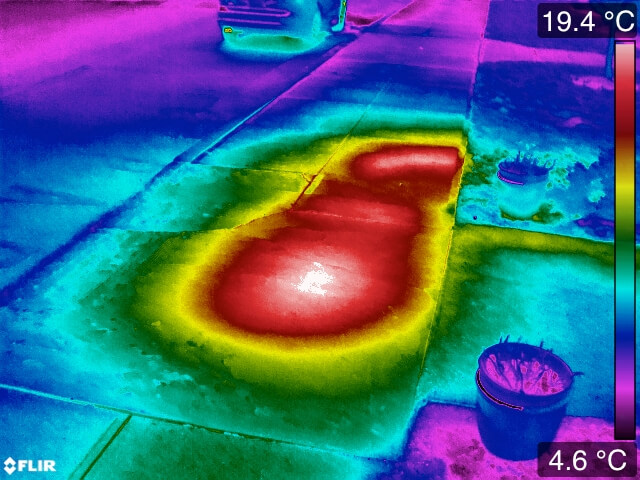Detecting Underground Pipe Leaks
Sponsored by:

Leaks are a common problem with underground piping systems. Under the correct conditions, infrared thermography can help to detect evidence of leaks from buried piping systems that carry hot or cold product.
When a leak develops in a buried piping system, fluid is lost to the surrounding earth. If a leak from a heated or cooled piping system is sufficiently large, a temperature change will occur at the surface of the ground in the vicinity of the pipe leak.

~ Images courtesy Wayne Swirnow
Leaks from buried piping are generally characterized by amorphously shaped thermal anomalies that appear along the pathway of the subject piping system. The ability to detect a pipe leak will be influenced by several interdependent factors including, but not limited to: pipe operating temperature, pipe system construction, burial depth, amount of loss, soil type and moisture content, and ground cover.
Infrared inspections of buried piping systems are best performed late at night with calm wind conditions. Inspections may be performed on foot, from a motor vehicle or from an aircraft. Performing the inspection late at night will eliminate the effects of solar loading and solar reflection.
During the inspection, the thermal imager is maneuvered over the pathway of the pipeline. Well-defined straight lines that correspond to the location of the buried lines generally indicate a healthy piping system. Amorphously shaped thermal anomalies that cannot be explained in terms of piping system construction or features may be indicative of pipe leaks and should be marked and subsequently investigated for cause.
Infrared inspection of underground piping systems is one of the many topics covered in all Infraspection Institute Level I training courses. For class locations and dates or information on our convenient, Distance Learning courses, visit us online at www.infraspection.com or call us at 609-239-4788.

